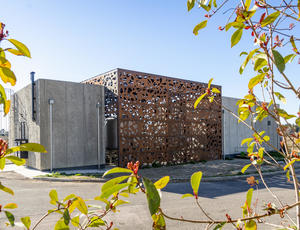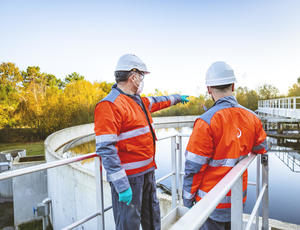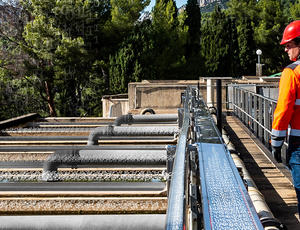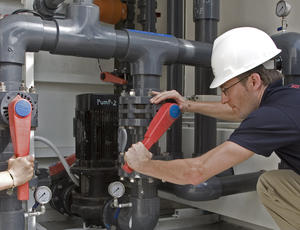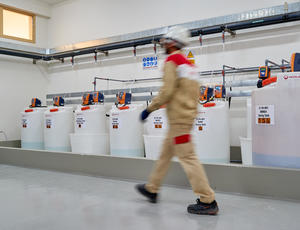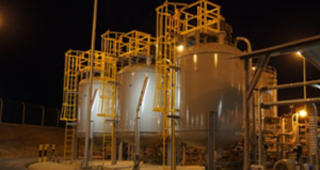An integrated quench water treatment system for ethane cracker plants.
Overview
Ethylene plants produce significant quantities of polluted waste streams containing:
- Oil
- Benzene
- Styrene
- Butadiene
- Volatile organic compounds (VOC)
If the suspended solids and hydrocarbons in the quench water are not properly removed, they may react in the dilution steam system downstream causing fouling of heat exchangers and increased energy consumption. Over time, this increase in steam usage reduces efficiency and leads to higher operating costs affecting the economic and environmental performance of the cracking furnace operations. Therefore, the purification of quench water for steam regeneration is important to avoid process upsets that threaten to foul processing equipment and disrupt stable ethylene production.
To meet your oil and gas needs of improving the challenging quench water treatment in the hydrocarbon/chemical processing industry, Veolia Water Technologies developed QuenchFlow, an efficient solution for ethylene plants.
Proven technologies guarantee performance
QuenchFlow incorporates two proven Veolia technologies, including Autoflot™ induced gas flotation (IGF) and Power Clean™ nutshell filters (NSF), in a fully integrated modular system, now packaged together to create a new symbiotic system that affords numerous advantages.
How does QuenchFlow work?
QuenchFlow is designed as a sequence of efficient treatment steps that combine gas flotation and media filtration processes. As the water enters the system, it is chemically conditioned to enhance the performance of Autoflot, Veolia's induced gas flotation technology. This first treatment unit separates dispersed oil droplets and suspended solids from the passing water stream by inducing fine gas bubbles that attach to contaminants as they buoy and float to the surface for skimming and removal. The treated water continues to a polishing step featuring a series of Veolia's PowerClean filters. This nutshell-media technology operated in a two-pass process removes the remaining free oil and solids to yield clean quench water of exceptional quality for recirculation into dilution steam production.
As it guarantees the highest contaminant removal efficiency, QuenchFlow is also designed to maintain the same efficiency in water preservation. The system automatically recovers filter backwash effluent for recycling and minimizing liquid waste streams.

Features and benefits
Double Filtration Barrier
Quenchflow’s multi-stage technology featuring sequential nutshell filtration ensures a reliable, high-quality effluent at all times even under severe process upsets, protecting the availability and uptime of dilution steam generators.
Enabling energy savings
QuenchFlow increases the energy efficiency of cracking operations avoiding water-induced fouling of heat transfer systems and subsequent thermal losses.
Closed-circuit solution
By removing particulates and hydrocarbons from a waste stream, QuenchFlow brings consistent water quality for recycling in dilution steam systems, thereby reducing requirements for fresh water make-up.
Modularity
The prefabricated modules are factory-assembled and tested before shipment. Quick and easy installation for a shorter project schedule, reduced capital costs, and minimization of risks associated with on-site activities.
Applications
Services
Contact
By recycling a process effluent, QuenchFlow enables the transformation of a waste stream into a resource otherwise discharged. This helps ethylene producers make their ethane steam cracking less water-intensive. It is an efficiency gain that has a huge impact as ethylene is one of the most widely produced chemicals and has large water inputs.

Albert Low
Vice President of Sales at Veolia Water Technologies
Contact Albert through his LinkedIn account
FAQ about QuenchFlow
What is quench water?
Quench water is the water used in the quenching process in an ethane cracker plant.
The quenching process occurs after the cracking furnace, where the hot cracked gas mixture exits at very high temperatures. This hot gas needs to be rapidly cooled or "quenched" to stop any further thermal cracking reactions.
The quench water system is critical because if the cracked gas is not rapidly cooled, overcracking can occur, forming excessive amounts of unwanted by-products like methane instead of the desired ethylene and propylene products.
After quenching, the steam from the vaporized quench water is typically recovered, condensed back to liquid water, and recycled for reuse in the quench system to improve overall water efficiency.
Can quench water be reused?
Yes, when quench water is reused in the dilution steam generation unit for steam regeneration, it is recycled as the dilution steam. In such a closed-loop circuit, ethylene production by steam cracking of ethane is more environmentally friendly and cost-effective.
If the quench water is not captured, treated and recycled, a large amount of additional water is needed to produce more steam for the cracking process.
What do ethane cracker plants do?
Ethane cracker plants are industrial facilities that convert ethane into other valuable chemical products through a process called steam cracking or ethane cracking. The main function of an ethane cracker plant is to break down or "crack" the ethane molecules (which are derived from natural gas or other sources) into smaller and more reactive molecules like ethylene and propylene.
Ethane cracker plants are crucial in the petrochemical industry as they provide the basic chemical building blocks for manufacturing many plastics, synthetic fibers, solvents, and other valuable chemicals.



